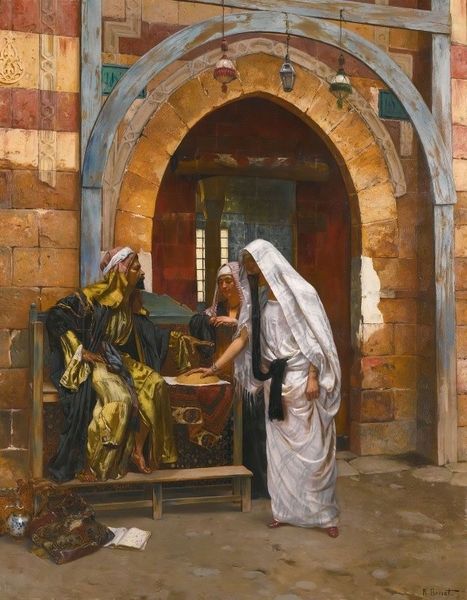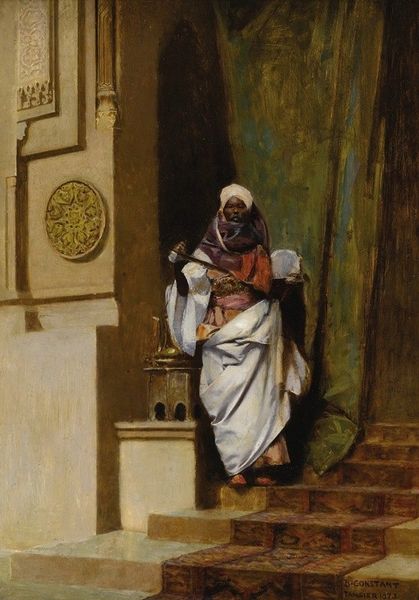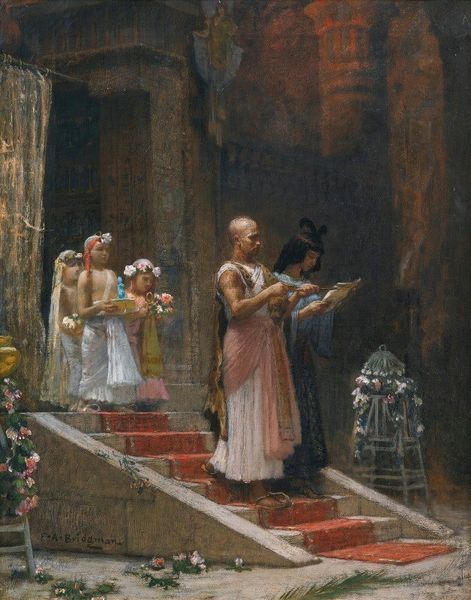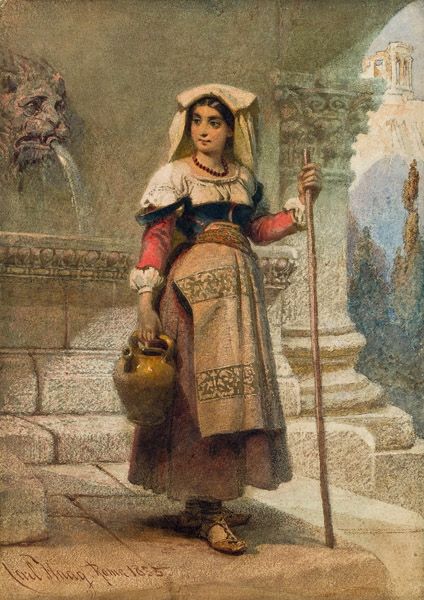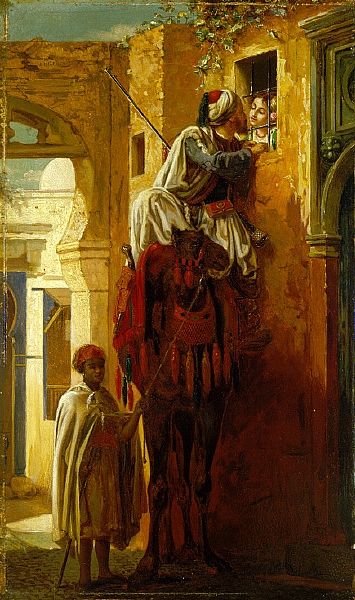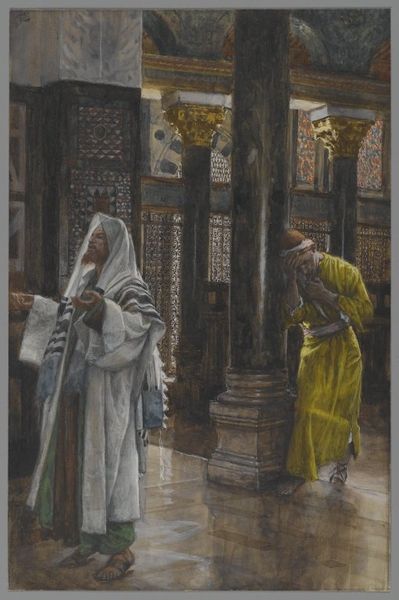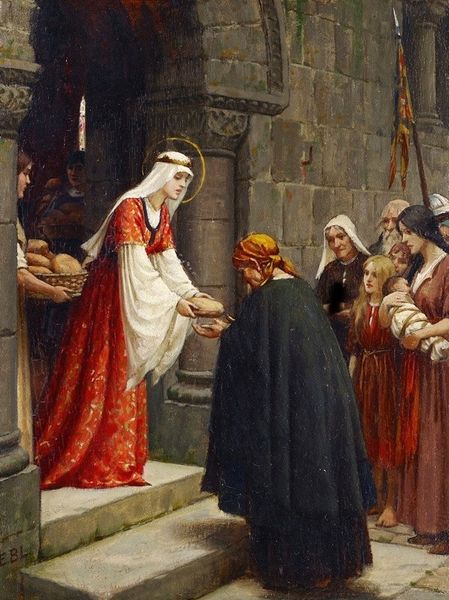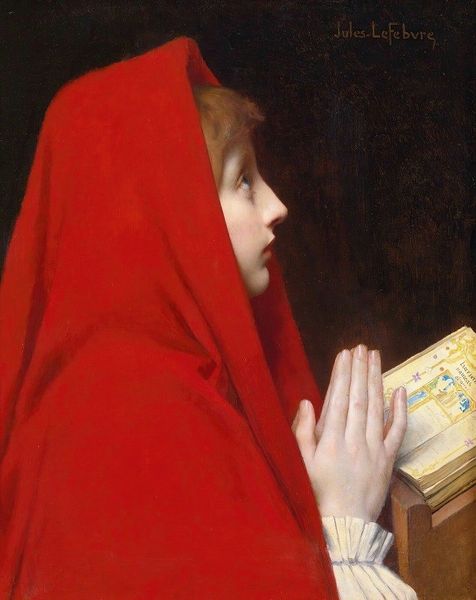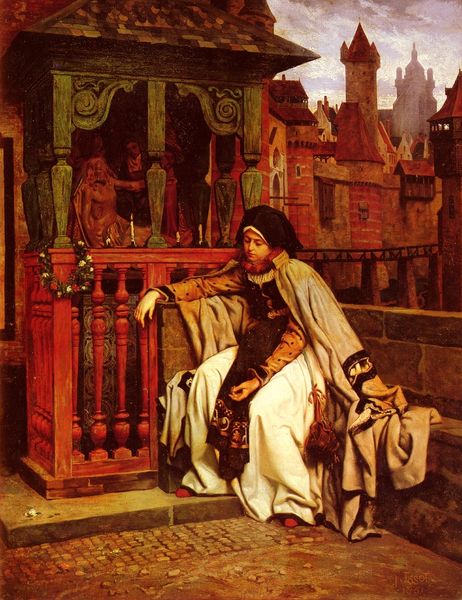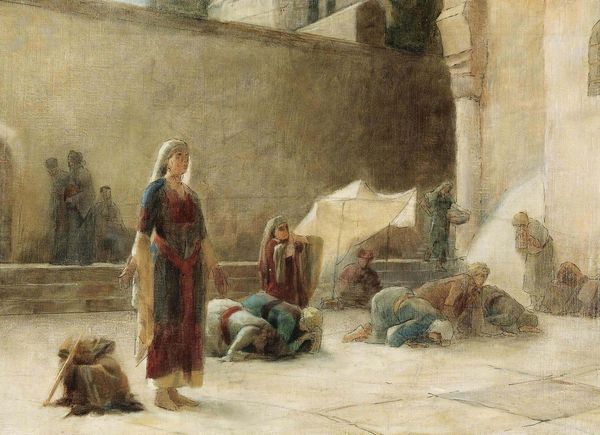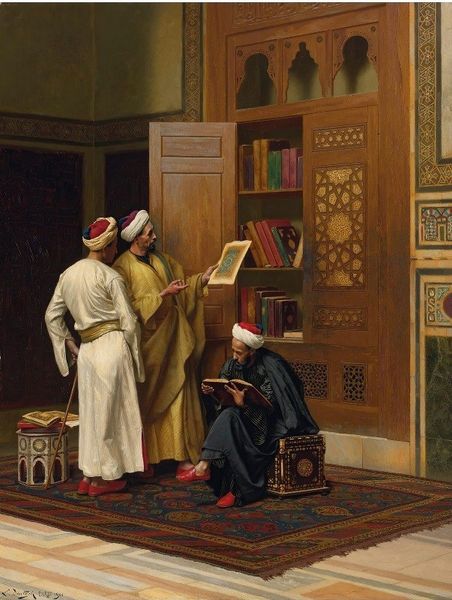
painting, oil-paint
#
painting
#
oil-paint
#
figuration
#
oil painting
#
romanticism
#
genre-painting
#
history-painting
#
academic-art
Copyright: Public domain
Curator: We are looking at “Christian Women at the Tomb of the Virgin, Jerusalem,” an oil painting whose maker is Jean Lecomte du Nouÿ. While undated, it feels representative of his interest in historical and Orientalist themes. Editor: It's undeniably lovely, if a bit melancholy. There's a softness to the light that suggests a sense of reverence. The women are so absorbed in their devotion, they almost seem unaware of being observed themselves. Curator: Absolutely. Nouÿ situates this intimate moment within a carefully rendered architectural setting, indicative of the academic approach favored during his time. The painting engages with the 19th-century fascination with the Holy Land and its portrayal in European art. I would also call attention to his romantic treatment. Editor: Tell me more. How does the composition speak to contemporary issues and discourse? Given that Nouÿ was a white male artist depicting this religious scene in Jerusalem, how does this dynamic influence our understanding and critique today? Curator: That’s an excellent, critical framing. Considering Nouÿ’s position within the artistic structures of 19th-century France, the gaze definitely plays a role. One must also address orientalism. One thing to point out, though, is that Nouÿ himself traveled extensively in the Middle East; but did these travels automatically bestow him authenticity? Where are we to locate the line separating appropriation from interpretation, reverence, and respect? Editor: It provokes questions, definitely. Questions about whose stories get told and by whom. Thinking about these women: are they generic types, or do they hold space as individual actors, within their respective histories? We can't erase the context within which this artwork exists and operates. Curator: Indeed. As an object it continues to foster productive conversations about representation and the exchange of cultural ideas, despite limitations in what was seen as a respectful artistic practice. Editor: For me, I keep returning to its intimate nature; to the devotion so readily on display. Even today that still matters, and that gives us something concrete, from this scene of Christian women, with which we may connect, and maybe that’s a first step.
Comments
No comments
Be the first to comment and join the conversation on the ultimate creative platform.

